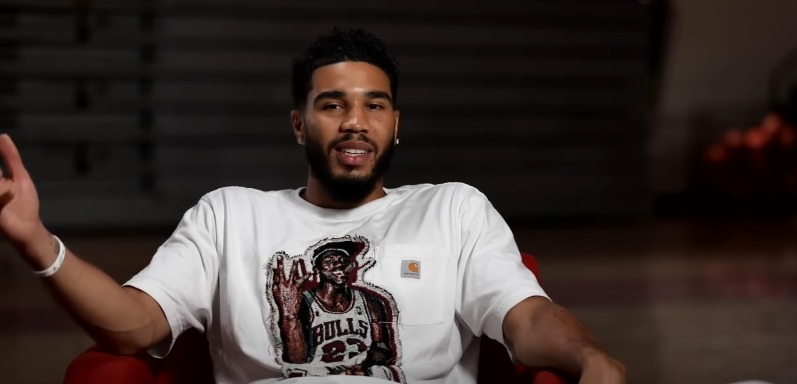Jayson Tatum‘s recent Achilles tendon surgery is a remarkable illustration of how timely medical attention can turn a catastrophic injury into a story of hope. After tearing his Achilles during Game 4 of the Celtics’ playoff run, Tatum had surgery in a short 18-hour period, which many experts believe is essential to minimizing complications and hastening recovery. This quick reaction, which was organized at the esteemed Hospital for Special Surgery in New York, not only demonstrates surgical accuracy but also the Celtics’ dedication to making sure their star player gets the best care available.
Dr. Martin O’Malley, who also treated Kevin Durant’s similar injury, performed the operation quickly after the injury and used cutting-edge repair techniques that have significantly improved the recovery process for elite athletes. Celtics coach Brad Stevens highlighted how this “remarkable convergence” of timing and experience could significantly reduce Tatum’s recovery time, giving Celtics supporters a cautiously hopeful look at his potential comeback to the court.
| Jayson Tatum | Bio & Career Highlights |
| Full Name | Jayson Christopher Tatum |
| Date of Birth | March 3, 1998 |
| Place of Birth | St. Louis, Missouri, USA |
| Height | 6 ft 8 in (2.03 m) |
| Position | Small Forward / Power Forward |
| NBA Team | Boston Celtics |
| Drafted | 2017, 1st Round (3rd overall pick) |
| Career Highlights | Multiple NBA All-Star selections; NCAA Champion with Duke |
| Injury | Right Achilles tendon rupture (May 2025) |
| Surgery | Performed by Dr. Martin O’Malley at Hospital for Special Surgery, NY |
| Expected Recovery | Estimated 8-9 months; exact timeline remains fluid |
| Reference | Yahoo Sports – Jayson Tatum Surgery |
Given the tendon’s vital role in explosive movements and agility, basketball players are notoriously challenged by Achilles ruptures. Such injuries have historically required extensive rehabilitation, keeping players out of action for nearly a year. However, Tatum’s case presents an engaging tale of inventiveness and tenacity. Similar to how a well-timed assist can create scoring opportunities on the court, the timing of the surgery and the skill involved may greatly lessen the usual recovery burden.
Brad Stevens’ comments have highlighted how extraordinary the circumstances are, calling Tatum’s accessibility to top-notch medical care “exceptionally fortunate.” The partnership between the Celtics’ team doctors and surgical experts is a prime example of a developing trend in professional sports: the emphasis on prompt, highly specialized care that combines precise surgery with thorough rehabilitation. Because of this strategy, the treatment of severe injuries is now characterized by hope rather than hopelessness.
LeBron James and Kevin Durant, two athletes who overcame similar obstacles, serve as examples of how advancements in surgery and therapy are prolonging careers that were previously believed to be at risk due to tendon injuries. Players are getting back to their best performance more quickly than ever by adopting state-of-the-art recovery protocols, such as customized strength training and minimally invasive techniques, which inspire confidence in both teams and fan bases.
Beyond the technical aspects, Tatum’s injury has an impact on the Celtics’ emotional and strategic planning. There are concerns regarding leadership responsibilities and playoff viability as the team reassesses without their offensive cornerstone. It is impossible to overestimate the psychological toll on Tatum, who is renowned for his intense competitiveness. The Celtics’ dedication to providing holistic care, which includes both physical therapy and mental health, demonstrates a positive trend toward athlete well-being as a multifaceted priority.
Economically speaking, Tatum’s absence changes contract negotiations and marketing strategies, making it more difficult for the franchise to strike a balance between short-term financial constraints and long-term health objectives. The injury also acts as a potent reminder of the physical vulnerability that lies beneath athletic prowess, highlighting the significance of funding injury prevention and prompt medical attention.

Tatum’s surgery demonstrates notable advancements in treatment timing and technique within the larger context of sports medicine. Prognoses can be changed by the combination of expertise and immediacy, as demonstrated by the exact 18-hour intervention window and the participation of a highly qualified surgeon. Even though it is cautious, the anticipated 8–9 month recovery period gives fans hope for the future and is consistent with contemporary best practices that prioritize full healing over hasty comebacks.
